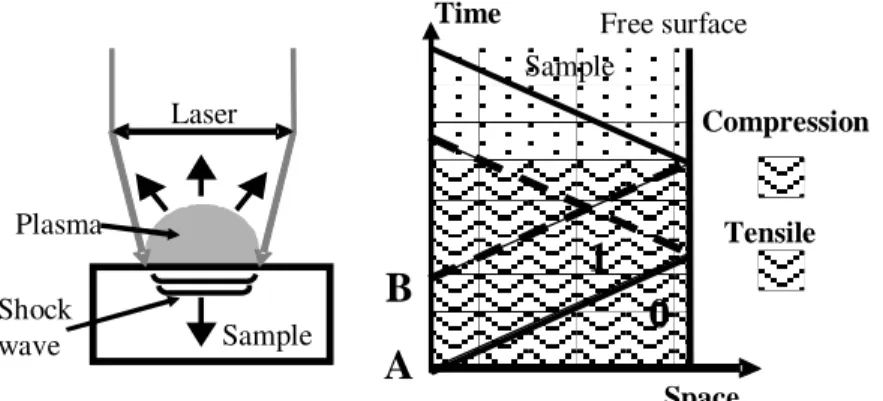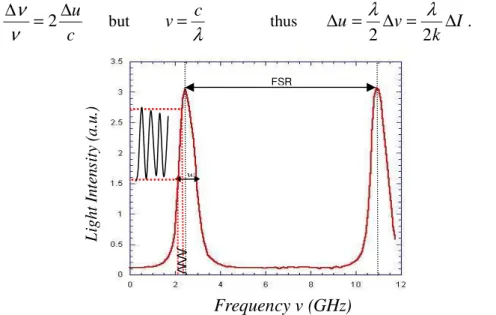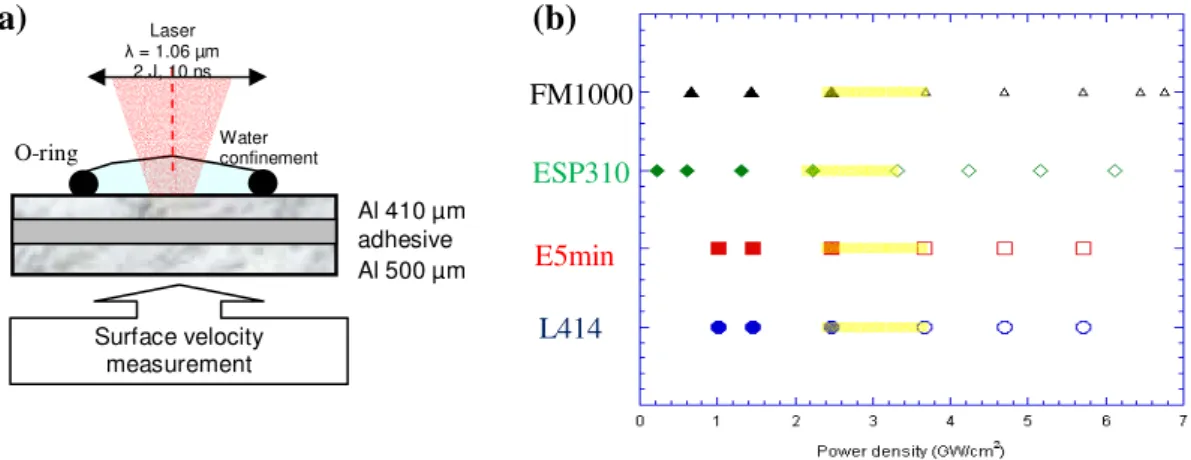Publisher’s version / Version de l'éditeur:
Vous avez des questions? Nous pouvons vous aider. Pour communiquer directement avec un auteur, consultez la première page de la revue dans laquelle son article a été publié afin de trouver ses coordonnées. Si vous n’arrivez pas à les repérer, communiquez avec nous à PublicationsArchive-ArchivesPublications@nrc-cnrc.gc.ca.
Questions? Contact the NRC Publications Archive team at
PublicationsArchive-ArchivesPublications@nrc-cnrc.gc.ca. If you wish to email the authors directly, please see the first page of the publication for their contact information.
https://publications-cnrc.canada.ca/fra/droits
L’accès à ce site Web et l’utilisation de son contenu sont assujettis aux conditions présentées dans le site LISEZ CES CONDITIONS ATTENTIVEMENT AVANT D’UTILISER CE SITE WEB.
1st International Symposium on Laser Ultrasonics: Science, Technology and Applications [Proceedings], pp. 1-6, 2008
READ THESE TERMS AND CONDITIONS CAREFULLY BEFORE USING THIS WEBSITE.
https://nrc-publications.canada.ca/eng/copyright
NRC Publications Archive Record / Notice des Archives des publications du CNRC : https://nrc-publications.canada.ca/eng/view/object/?id=7ebac736-50d1-4dd0-a051-4c2fe7977cbd https://publications-cnrc.canada.ca/fra/voir/objet/?id=7ebac736-50d1-4dd0-a051-4c2fe7977cbd
NRC Publications Archive
Archives des publications du CNRC
This publication could be one of several versions: author’s original, accepted manuscript or the publisher’s version. / La version de cette publication peut être l’une des suivantes : la version prépublication de l’auteur, la version acceptée du manuscrit ou la version de l’éditeur.
Access and use of this website and the material on it are subject to the Terms and Conditions set forth at
The Use of Laser-Doppler Interferometry Based on a Fabry-Perot Etalon for Shock Adhesion Test Applied to Adhesively Bonded Materials
Arrigoni, Michel; Kruger, Sylvio E.; Blouin, Alain; Lévesque, Daniel; Lord, Martin; Monchalin, Jean-Pierre
The Use of Laser-Doppler Interferometry Based on a Fabry-Perot
Etalon for Shock Adhesion Test Applied to Adhesively Bonded
Materials
Michel ARRIGONI 1,2, Silvio E. KRUGER 1, Alain BLOUIN 1, Daniel LEVESQUE 1, Martin LORD 1, Jean-Pierre MONCHALIN 1
1
Industrial Materials Institute, National Research Council Canada, 75 de Mortagne Blvd, Boucherville (QC), J4B 6Y4, Canada; Phone: +1 450 641-5116, Fax: +1 450 641-5106; e-mail:
silvio.kruger@cnrc-nrc.gc.ca, alain.blouin@cnrc-nrc.gc.ca, jean-pierre.monchalin@cnrc-nrc.gc.ca
2
Laboratoire Brestois de Mécanique et des Systèmes, Equipe d’Accueil 4325 - ENSIETA / Université de Brest / ENIB, 2 Rue François Verny, 29806 Brest Cedex 9 France;
Phone: +33298348978, Fax: +33298348730, e-mail : michel.arrigoni@ensieta.fr
Abstract
Adhesively bonded assemblies satisfy several transportation industry requirements such as easiness of processing and lightness. These adhesively bonded assemblies also provide continuous adhesion compared to riveting, screwing or welding. To evaluate the bond strength between two adhesively bonded plates, laser shock adhesion tests have been used as a non-destructive adhesion evaluation technique. The method relies on a Nd-YAG pulsed laser for the shock generation. The laser power density on the surface is about a few GW/cm² and the irradiation is performed with a water confinement layer. An original and simple laser-Doppler interferometer device based on a Fabry-Perot etalon has been designed. The free surface velocity is thus measured with this diagnostic. Experiments were carried out on 500 µm and 410 µm aluminium plates bonded with various adhesives. Results show that the proposed adhesion test is able to differentiate bond of different quality and to estimate the bond strength.
Keywords: Shock wave, adhesion, adhesive, bond strength, Fabry-Perot interferometer, non-destructive technique, LASAT
1.
Introduction
1.1 Adhesion techniques
Adhesive bonding has been used for a long time as a simple method and a low-cost alternative to assemble very dissimilar materials [1]. However, its reliability depends on the quality of the adhesion. Various adhesive tests have been developed but the challenge of evaluating the bond strength by a non-destructive method remains.
Adhesion strength depends on physico-chemical properties of the interface and can thus be affected by many factors, including the characteristics of the adhesive, the temperature and pressure during joining and the surface preparation. A relevant test consists in submitting the joint to a high stress that will destroy a weakly bonded joint whereas a sound joint will remain unaffected. High energy pulsed lasers are adequate tools for generating shock waves that result in high stresses on large structures of any shape. This method relies on shock physics and is inspired from techniques designed for bond strength measurement of coatings by shock adhesion tests for various applications [2-7].
1.2 Shock adhesion test
Tensile stress is generated from shock wave propagation in the target and, depending on the material strength, may lead to spallation [8], as described on the space-time diagram in Fig. 1. A shock is maintained between instant A and B on a sample. Its propagation (solid line in space-time diagram) towards the free surface induces a compressive stress (area with wavelets in Fig. 1b), followed by a release state (dashed line) corresponding to unloading (state after B). Once the free surface is reached, the shock is reflected as release waves (only the head is represented in Fig. 1b by a dashed line). When two release waves are crossing each other, tensile stress is generated (area with dots in Fig. 1b). By tuning shock characteristics and sample geometry, it is possible to bring the tensile stress at the interface of a layered material and thus, in case of high stress, to delaminate the layer. The process can be exploited as an adhesion test [9].
Figure 1. a) Laser-material interaction and laser-induced shock wave. b) Spallation mechanisms.
1.3 Diagnostic technique
As shock wave propagation is a rapid phenomenon and its observation requires specific devices. The most accessible variable in experiments is the material velocity of the free surface (opposed to the impacted one). The use of laser has revolutionized shock wave measurement technologies. Thus, more reliable techniques based on the Doppler shift measurement with an optical interferometer, called Laser Doppler Interferometer (LDI), have been designed [10-13]. When the shock breaks out at the surface illuminated by a laser beam, the reflected laser light is frequency shifted by the Doppler effect from an incident frequency f0 to frequency f as follows:
c u u f f f 2( 0) 0 0 = − − (1)
where u is the instantaneous material velocity to be measured, u0 is the initial material
velocity and c the speed of light.
We have designed an LDI based on a solid Fabry-Perot etalon for shock measurement. This system allows the measurement of particle velocities ranging from less than 0.3 m/s to 200 m/s. In this paper, we report results obtained with this device on laser-induced shock experiments performed on Al 5754 plates adhesively bonded with various glues. Free surface
0
1
A
B
Time Space Sample Tensile Compression Laser Sample Plasma Shock wave2.
Fabry-Perot etalon Laser Doppler Interferometer
Our device is based on a solid-state monolithic Fabry-Perot planar etalon [14]. This device is widely used in optical spectroscopy [15-17] and can be used to detect ultrasonic motion of material surface. Spectral information on the light source is obtained by selecting part of the central fringe pattern in the focal plane of a lens (Fig. 2). When the light frequency ν is swept or when the Fabry-Perot optical thickness is varied, resonance peaks are observed (Fig. 3). These resonance peaks are separated by the Free Spectral Range (FSR) of the etalon given by equation 2 where e is the thickness of the etalon, n its refractive index and c is the speed of light in vacuum.
ne c FSR
2
= (2)
Figure 2. Principle of the Fabry-Perot interferometer as used in optical spectroscopy.
The full width at half maximum of the peaks, noted w, is equal to the FSR divided by the Fabry-Perot finesse F, which depends upon the etalon characteristics. When the optical frequency is stabilised at half maximum of a resonance peak of the etalon, modulation of the optical frequency results in modulation of the optical intensity transmitted through the etalon, as sketched in figure 3, with a proportionality factor given by the slope of the etalon frequency peak at half maximum. Since the variation of material velocity u induces a Doppler optical frequency shift ν, the etalon provides a direct relationship between the light intensity transmitted through the etalon I and the material velocity u, as summarized in equations (3).
c u ∆ = ∆ 2 νν but λ c v= thus I k v u= ∆ = ∆ ∆ 2 2 λ λ . (3)
Figure 3. Resonance peaks of the Fabry-Perot etalon used in this work.
e Reflective surfaces θ L screen Étalon FSR w GHz L ight I nt ens it y (a. u .) Frequency ν (GHz)
A solid etalon Fabry-Perot is used instead of one made of two parallel plates, which would have required a precise alignment system (usually made by 3 piezoelectric pushers) to make the two plates parallel. Moreover, a solid etalon does not require any alignment and is also weakly dependent on room temperature variations. However this requires in turn the detection laser source to be frequency tunable.
3.
Application to bond strength measurement
The Fabry-Perot etalon interferometer was used for measuring the free surface velocity (surface opposed to the impacted one) of adhesively bonded aluminium plates. Each sample is made of two 70 mm x 60 mm plates of aluminium alloy AA 5754 of 410 µ m and 500 µ m thickness that were adhesively bonded with different adhesives. Table I shows a summary of the tested samples.
Table 1. Aluminium plates assembled with four kinds of adhesives
Sample Thickness plate 1 ± 5 µm Nominal adhesive thickness (µm) Thickness plate 2 ± 5 µm Al / ESP 310 / Al 410 130 500 Al / FM1000/ Al 410 400 500 Al / L414 / Al 410 50 500 Al / E5min / Al 410 60 500
The experimental configuration consists of a shock generation on the top side of the sample and surface velocity measurement on the bottom side (Fig. 4a). Shock generation is performed with a Nd-YAG high energy pulsed laser which provides 10 ns duration gaussian pulses of up to 2.4 J at a wavelength of 1.064 µ m and at a repetition rate of 10 Hz. Laser irradiation is performed under water confinement regime, which allows increasing the shock pressure and its duration [18]. The laser beam is focused on the 3-layer sample to a spot of about 2 mm diameter. Energy loss due to the light absorption in the 3 mm thick water layer [19] and spurious reflections on optical components is about 0.5 J. In such conditions, Berthe [20] showed that the shock pressure could reach up to 5 GPa at a power density of 9 GW/cm². Shock detection is performed with a long pulse Nd-YAG laser, which delivers 400 µs duration pulses of about 500 W peak power. The detection laser beam is focused to a 400 µ m spot diameter on the sample bottom surface. The detection laser light collected from the sample surface is sent to the Fabry-Perot etalon by a large core optical fibre. Generation and detection lasers are synchronised by a clock control unit. Because of the water confinement regime, we used a shot by shot measurement procedure, which allows wiping optical components sprinkled by the confining water during the laser impact. The signal acquisition is trigged with an avalanche photodiode detecting the laser light at the shock generation.
Signals of free surface velocity are compared for several shots involving different power densities ranging from less than 1 GW/cm² up to near 6 GW/cm² for the four kinds of adhesives. The analysis of velocity peaks gives information on wave propagation and allows the rupture diagnostics. However, with multilayered samples, multiple wave rebounds make interpretation more complex. In order to facilitate the interfacial rupture diagnostics, the fast Fourier transformation (FFT) of velocity signals is performed for each shot. The periodicity of the wave rebounds are then viewed as peaks at given
frequencies. An example is shown in figure 5 showing free surface velocities (fig. 5a) and their corresponding FFT (fig. 5b) for shots performed at 2.47 GW/cm² (without delamination) and at 4.69 GW/cm² (delamination) on aluminium plates bonded with Loctite® 414 adhesive. Figure 4b shows the delamination threshold for each adhesive, where the empty symbols indicate delamination in the sample.
Figure 4. (a) Experimental set-up diagram and (b) adhesion thresholds in GW/cm² for tested samples, with empty marks when delaminated.
Figure 5. Example of free surface velocity (a) and FFT analysis (b) for shots on aluminium plates adhesively bonded with Loctite® 414.
4.
Conclusions
We have designed and tested a simple laser Doppler velocimeter based on a solid state monolithic Fabry-Perot etalon coupled to a single-frequency tunable detection laser. The technique was tested for evaluation of bonded aluminium plates with four kinds of adhesives. The technique can be applied for real-time diagnostics of bonds, can be automated and remains non-destructive as long as the laser power is below the known rupture threshold. The FFT analysis consolidates the delamination diagnostics. Also, the developed interferometer appears as an alternative to the well-known VISAR (Velocity Interferometer System for Any Reflectors).
Water confinement Laser λ = 1.06 µm 2 J, 10 ns O-ring Al 410 µm Surface velocity measurement Al 500 µm adhesive delaminated not delaminated Time µ s F re e su rf a c e v e lo c it y m /s Frequency (MHz) in te n si ty a) b) FM1000 ESP310 E5min L414 (a) (b)
Acknowledgements
Authors are grateful to the National Research Council Canada for its support through the Natural Sciences and Engineering Research Council of Canada. Authors would like to thanks B. Arsenault and Jean-François Alarie from IMI-CNRC for the adhesive assembly, the useful information and advises they kindly provided, and Laurent Berthe and Michel Boustie from the CNRS France for their helpful remarks.
References
1. M. Regert, Journal of separation science 27, 244-254, 2004.
2. W.E. Snowden, I.A. Aksay, Material Science Res. 14, pp. 651-660, 1981.
3. I.G. Epishin, V.V. Suslov, and V.A. Yanushkevich, “Determination of adhesion strengh of film structures of components in electronic devices using laser shock waves”, Fizika i Khimiya Obrabovki Materialov, 22, pp. 80-84, 1988.
4. V. Gupta. And A.S. Argon., Materials Science and Engineering, AL26, pp. 105-117, 1990.
5. E. Auroux, "Etude de l’adhérence de couches minces sur des substrats soumis à un choc laser", Thèse de l’Université de Poitiers, 1999.
6. R. Bossi, K. Housen. and C. Walters, NTIAC (Nondestructive Testing Information Analysis Center) Newsletter, Vol. 30, 2005.
7. S. S. V. Kandula, C. D. Hartfield, P. H. Geubelle, N. R. Sottos, Thin Solid Films (2008).
8. T. Antoun, L. Seaman, D.R. Curran, G.I. Kanel, S.V. Razorenov, A.V. Utkin, “Spall fracture”, Springer, 2003.
9. C. Bolis, L. Berthe, M. Boustie, M. Arrigoni, S. Barradas and M. Jeandin J. Phys. D: Appl. Phys. 40, pp. 3155–3163, 2007.
10. Mc Millan, Goosman, Parker et al., Rev. Sci. Instrum. 59, 1988.
11. J.-P. Monchalin “Optical detection of ultrasound”, IEEE Transactions on ultrasonics, ferroelectrics and frequency control, UFFC-33, 1986.
12. R. J. Dewhurst and Q. Shan, Meas. Sci. Technol. 10, R139–R168, 1999.
13. L.M. Barker and R.E. Hollenbach, “Laser interferometry for measuring high velocities for any reflecting surface”, Journal of Applied Physics 43, pp. 4669– 4675, 1972.
14. M. Arrigoni, J.-P. Monchalin, A. Blouin, S. E. Kruger, M. Lord, “Laser Doppler Interferometer based on a solid Fabry-Perot Etalon for measurement of surface velocity in shock experiments”, submitted to Meas. Sci. and Technol., 2008. 15. C.B. Scruby, L. E. Drain, “Laser ultrasonics, techniques and applications”,
Adam Hilger, 1990.
16. G. Hernandez, “Fabry-Perot interferometers”, Cambridge University Press, 1988.
17. J. M. Vaughan, “The Fabry-Perot interferometer, History, theory, practice and applications”, Adam Hilger, 1989.
18. R. Fabbro, P. Ballard, J. Fournier, D. Devaux, J. Virmont, J. of Appl. Phys., vol. 68 (2), p. 775-784, 1990.
19. K. Kanayama et al., Heat transfert Japanese research – 26, 1997.
20. L. Berthe, R. Fabbro, P. Peyre, L. Tollier, and E. Bartnicki, J. Appl. Phys. 82, p. 15, 1997.



